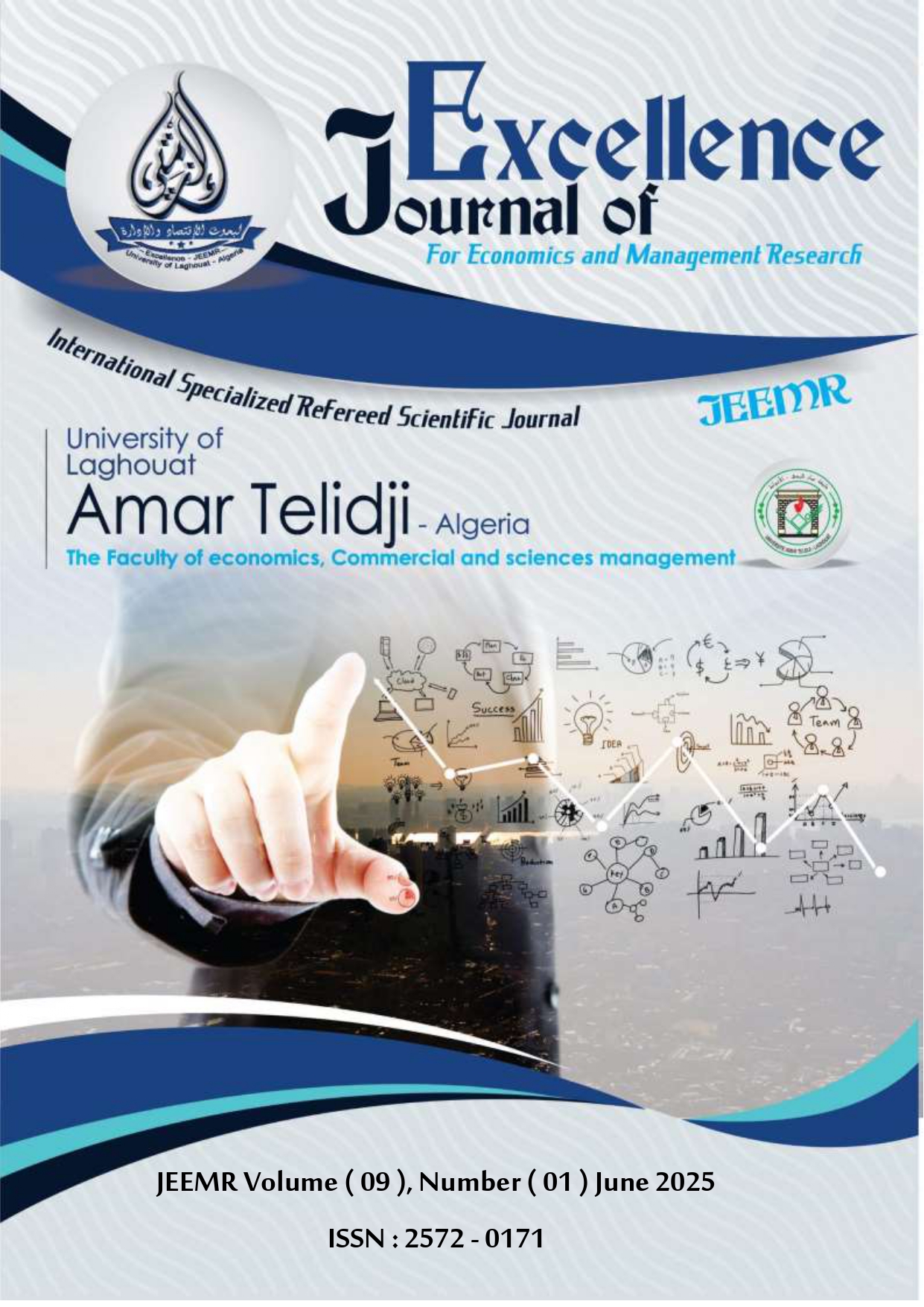Key Factors Contributing to Assisting and Protecting Consumers of Organic Agricultural Products Using Modern Technologies
Abstract
This research paper aims to highlight the potential of utilizing modern technology in the growth of the safe agricultural sector, both in terms of the nutritional value of products and preserving consumer health, as well as supporting the national economy. It proposes the use of artificial intelligence (AI) and its applications to introduce consumers to organic 'Bio' agricultural products, attract them, raise their awareness, and, on the other hand, help them avoid falling into the misconceptions propagated by many producers of such products and protect them. For this purpose, a survey was conducted targeting 124 consumers to identify as many scattered factors as possible for protecting consumers of these products, resulting in 14 factors. A second survey was then conducted, involving 657 individuals from around the world. Using exploratory and confirmatory factor analysis, we identified five key factors that effectively contribute to assisting and protecting this category of consumers, listed as follows: Tracking and Analysis, Detection of Counterfeit Products, Product Availability Location, Improvement of Product Quality, and Product Sizes, Shapes, and Conditions
References
A.M. Litterick, C. W. (2017). Organic Farming. Encyclopedia of Applied Plant Sciences (Second Edition)., pp. Pages 311-317.
Agriculture, United States Department of. (25/03/2025). rules-regulations. Retrieved from ams.usda.gov: https://www.ams.usda.gov/rules-regulations/organic/labeling
European Commission. (25 /03/2025). organic-logo. agriculture.ec.europa.eu: https://agriculture.ec.europa.eu/farming/organic-farming/organic-logo_en
Grand View Research. (30/04/2025). Récupéré sur Grand View Research: https://www.grandviewresearch.com/industry-analysis/organic-foods-beverages-market
Helga Willer, B. S. (2023). The World of Organic Agriculture . Switzerland: FiBL, IFOAM - Organics International.
Hughner, R. S. (2007). Who are organic food consumers? A compilation and review of why people purchase organic food. Journal of Consumer Behaviour, 94-110.
IFOAM, F. &. (2024). The World of Organic Agriculture. Switzerland: Druckerei Hachenburg.
J., Verbeke, W., Mondelaers, K., & Van Huylenbroeck, G Aertsens. (2009). Personal determinants of organic food consumption. British Food Journal، 1140‐1167.
M. Šrůtek, J. U. (2008). Organic Farming. Encyclopedia of Ecology, pp. 2582-2587.
Wright, S., & McCrea, D. (2007). The Handbook of Organic and Fair Trade Food Marketing. UK: Blackwell Publishing.
al-Imārāt al-ʻArabīyah al-Muttaḥidah. (25/03/2025). ar-AE. : https : / / u. ae / ar-ae / information-and-services / environment-and-energy / food-security # national-system-for-sustainable-agriculture
al-Munaẓẓamah al-ʻArabīyah lil-Tanmiyah al-zirāʻīyah. (2020). al-Dalīl alāstrshādy lil-zirāʻah al-ʻuḍwīyah fī al-waṭan al-ʻArabī. al-Sūdān : Jāmiʻat al-Duwal al-ʻArabīyah.
Jarīdat al-iqtiṣādīyah. (25/03/2025). iṭlāq "hākāthwn al-zirāʻah" lʼyjād al-ḥulūl al-dhakīyah li-taḥaddīyāt al-qiṭāʻ fī al-Saʻūdīyah. tamma alāstrdād min Jarīdat al-iqtiṣādīyah : https : / / www. aleqt. com / 2025/03/25 / article _ 2590036. html
D. bwhnh Kulthūm, Ḥānī almyn. (6 11, 2021). Dawr al-zirāʻah al-ʻuḍwīyah fī taḥqīq al-tanmiyah al-mustadāmah fī al-waṭan al-ʻArabī. mjlh Istirātījīyāt al-Taḥqīqāt aālqtṣādyh wa-al-mālīyah, 3 (2), 67-44. (25/03/2025) https : / / www. asjp. cerist. dz / en / downArticle / 729/3 / 2/168477
M. Wāʼil al-Madʹhūn. (2025 25/03 /). al-dhakāʼ al-iṣṭināʻī wa al-tiknūlūjiyā wa taʼthīruhā fī majāl al-zirāʻah. tamma alāstrdād min ilá ayn Kūm : https : / / elaayn. com /
Wizārat al-zirāʻah-Mamlakat al-Urdunīyah al-Hāshimīyah. (2025/03/25). Mashārīʻ _ al-Wizārah. tamma alāstrdād min moa. gov. jo : https : / / moa. gov. jo / AR / ListDetails /








